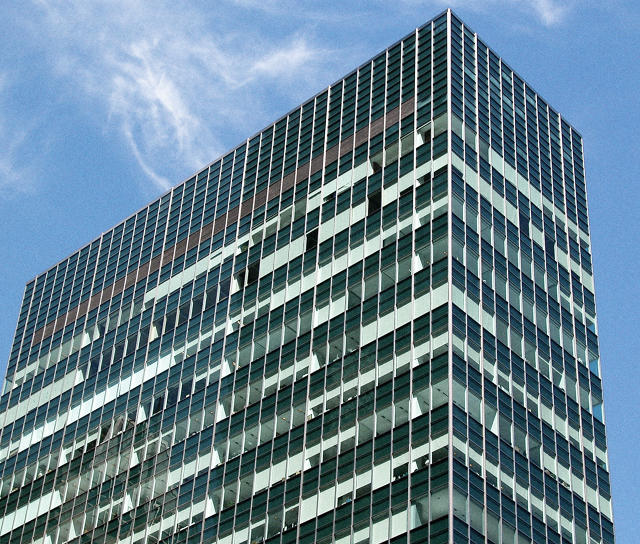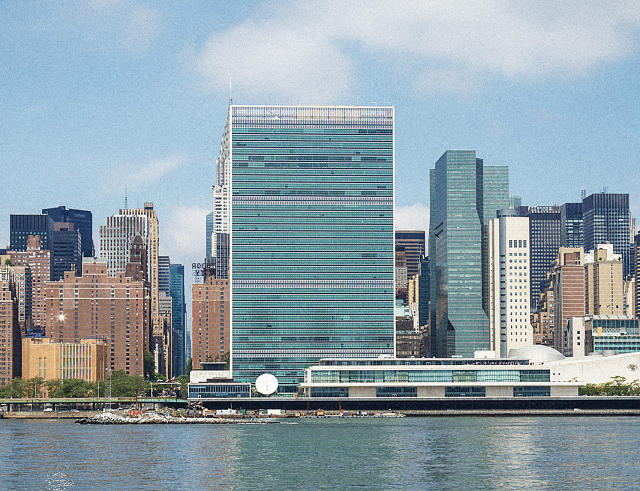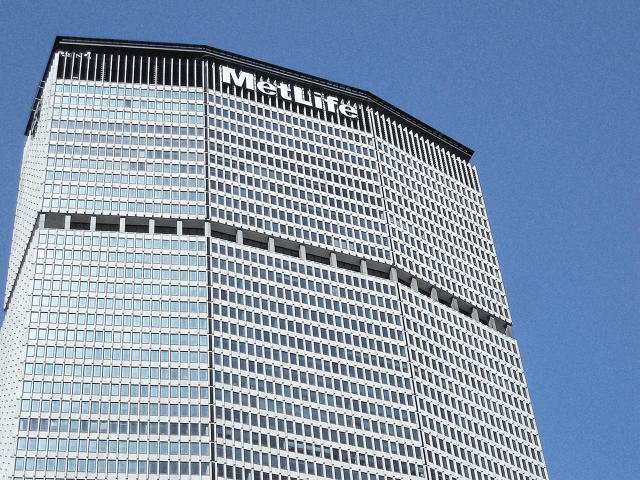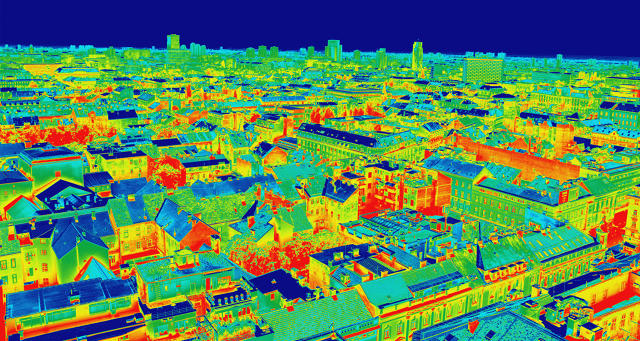Architect James Timberlake charts a course for making ethical decisions about unsustainable Modernist architecture.
Last week at the climate talks in Paris, world leaders committed a full day to discussing public policies and financial solutions to reduce carbon emissions within the building sector. It’s widely documented that buildings are the culprit for at least 30% of global greenhouse gas emissions. Meanwhile in the building sector, there’s an ongoing discussion about what to do with inefficient buildings from past eras. Debate around historic value versus economics inevitably leads to the big question: Are these buildings worth retrofitting, or do we tear them down and start over?

During the golden era of building post-WWII, an estimated 30 million commercial structures were built, many of them high-rises, containing workplaces and housing in all the major cities. The most notable of them—designed by significant architects such as I.M. Pei, Mies van der Rohe, Eero Saarinen, Edward Larabee Barnes, and Philip Johnson, and firms such as Harrison & Abramovitz, SOM, and HOK—were innovative for their time and are engrained in our collective urban mind. What are the ethics of intervening in these mid-century structures to bring them up to energy code compliance?
Left Behind By Advancing Technology
I live in Society Hill Towers, an I.M. Pei-designed high-rise complex in Philadelphia. At the age of 12, I saw the three towers emerge from the ground during a stopover on my way to the 1964 New York World’s Fair. Fifty years later, the residents are debating how to make the buildings energy efficient without destroying their character, which mainly comes from the distinctive egg-crate exo-structure of concrete and the floor-to-ceiling windows. The windows are the most critical aesthetic feature of the building. Further, the light, views, and how we inhabit the space all depends on these magnificent windows. Unfortunately, they are leaky and provide poor insulation. To change them will require massive renovation within each apartment in the building. What to do? The condo board has employed best practices to reduce overall energy costs, from upgrading the boiler, to replacing pipes, to installing LED lighting. Yet, the windows remain the single most wasteful element. So, the debate continues.
Mid-century design and construction advanced the creation of building envelopes. Thin-walled glass construction evolved as an alternative to load-bearing masonry walls with punched windows. Along with the benefit of expansive views and light came the problem of managing solar heat and energy loss through those big panes. But soon enough, as pointed out almost twenty years ago by Alan Cunningham in his book Modern Movement Heritage, how to deal with the design intent of these mid-century curtain walls alongside rapidly advancing facade technology became a conundrum. If we can’t upgrade a building without altering its character, are these structures worth saving in the first place?

Worth Saving? 3 Key Questions
A 2013 report written by the sustainability consultants Terrapin Bright Green with strategist Bill Browning, “Midcentury (Un) Modern: An Environmental Analysis of the 1953-1978 Manhattan Office Building,” recommended that it was better for the environment to tear down these sorts of buildings, maintaining that even a retrofit with double- or triple-glazing would not go far enough to make a building energy efficient by today’s standards. While this is a provocative proposal, in order for us to come to terms with a viable answer, we must ask a set of deeper questions. Here are three to start:
1. How much is the facade, or curtain wall, to blame for inefficiency? It’s only recently become normal to factor embodied environmental impacts into a building’s environmental footprint. Quantifying the environmental impact of these buildings is essential for environmentally ethical construction and sustainability, yet we have barely scratched the surface of this topic. What are the implications for demolition? An average skyscraper contains hundreds of thousands of tons of steel, concrete, glass, and aluminum, much of which may be recycled if properly taken down. But the schedule and its attendant costs factor into this—if it takes more than a year to take down a high rise of significant height, that expense, along with the energy, time and materials already embedded in an existing building may force the argument to re-invest in the proper design and engineering, i.e. re-utilizing the existing façade and finding other ways to make the structure energy compliant and efficient.
2. Does replacing the curtain wall really add up? Or, what is the curtain wall value-to-replacement ratio? If the curtain wall is retrofitted, or replaced, what is the cost of that in terms of the potential energy lowered by employing a more efficient envelope? Does one pay for the other? This is a relatively easy calculation that architects and engineers can do as an act of design. For example, life-cycle inventory data sets can be used to account for the upfront environmental cost of materials and the subsequent environmental impact reductions due to operational energy savings. Essentially, the more energy saved, the shorter the payback period is in terms of cost or carbon.
3. What if you look beyond the curtain wall? Are there other methods for energy efficiency by employing, rather than replacing, the curtain wall? This includes not only so-called energy “offsets” but also an essential evaluation of an adaptive reuse of the curtain wall, in itself a building system. Might an additional interior layer be added that mitigates the lack of a thermal break? All sides are of a building not equal. Might we think about selective zone replacements, for instance, on portions of the façade that gather or transmit the most energy?

To wipe the slate clean through mass demolition would have severe impacts on the environment, architectural ethics, and, in fact, sustainability. We’ve learned so much over the years about building renovation and intervening in more conventional structures, or more modest versions of these envelopes, how might these lessons be applied to a 30- or 40-story structure or higher? How might our highly energy efficient envelopes—active, passive, and hybrid curtain walls developed with the help of engineers such as ARUP and Buro Happold and global curtain wall manufacturers such as Gartner, Permasteelisa, and Schuco—address this problem?

The current tools at our disposal allow us a better way forward. For example, thermal imaging has been piloted in many European cities to find out which buildings are energy wasters. With its powerful visuals, thermal imaging on a city like New York could help guide policies and budgets toward improving environmental performance in the regions that need it most. Competitions like Metals in Construction magazine’s 2016 Design Challenge, engage both architects and engineers and create an opportunity for public dialogue about long-term solutions. The impact of historical architectural infrastructure on the energy crisis is an ethical problem that we can no longer afford to ignore.
[Top Photo: Flickr user Tyler Merbler]
Fast Company , Read Full Story
(22)